2015 Los Alamos Dynamics Summer School
The 2015 Los Alamos Dynamics Summer School program consisted of the following seven projects. Each project had two mentors and three students. Below are the project and team descriptions. Following that are abstracts of selected lectures presented to the students at the summer school.
Projects and Teams
Many conventional approaches to specifying mechanical shock environments rely on the shock response spectrum as a measure of the severity of the environment. In this project, students will explore a variety of measures for the severity of a shock environment and identify measures, or transforms of those measures, that can uniquely specify a test environment to reproduce a desired severity level. These measures shall be restricted to those that can be observed in real time during a laboratory test, and they should be restricted to those that can be controlled in real time during a laboratory test. Students will conduct an analytical study based on measured shock data from a structure’s service environment and implement the chosen measures experimentally as a proof of concept.
Project Mentors: Stuart Taylor and Dustin Harvey
Project Team: Matt Baker, Kelsey Neal, Katrina Sweetland
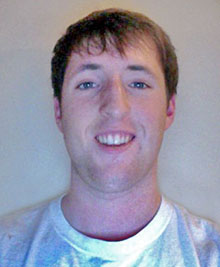 Matt Baker - My name is Matthew Baker and I am from Sterling, Virginia. I am a Clemson University student studying civil engineering with an emphasis in structures. After completing my undergraduate studies in May 2015, I will continue my education in civil engineering at Clemson University. I am a huge sports fan, and I love to watch my Tigers play on Saturdays.
Matt Baker - My name is Matthew Baker and I am from Sterling, Virginia. I am a Clemson University student studying civil engineering with an emphasis in structures. After completing my undergraduate studies in May 2015, I will continue my education in civil engineering at Clemson University. I am a huge sports fan, and I love to watch my Tigers play on Saturdays.
 Kelsey Neal - I am a Los Alamos native, but have had the opportunity over the last five years to live coast to coast. My journey away from home started in Golden Colorado to attend Colorado School of Mines. At Mines I pursued a degree in mechanical engineering, was captain of our varsity soccer team, and a member of our Fellowship of Christian Athletes group. I have had the opportunity to spend my summers seeing what a mechanical engineer's role would be in an oil field in California and a chemical plant in Louisiana. Over the last 9 months I have been interning at the manufacturing facility at Walt Disney World. These internships have given me the opportunity to see the diversity of mechanical engineering. In December I will complete my degree in mechanical engineering at CSM.
Kelsey Neal - I am a Los Alamos native, but have had the opportunity over the last five years to live coast to coast. My journey away from home started in Golden Colorado to attend Colorado School of Mines. At Mines I pursued a degree in mechanical engineering, was captain of our varsity soccer team, and a member of our Fellowship of Christian Athletes group. I have had the opportunity to spend my summers seeing what a mechanical engineer's role would be in an oil field in California and a chemical plant in Louisiana. Over the last 9 months I have been interning at the manufacturing facility at Walt Disney World. These internships have given me the opportunity to see the diversity of mechanical engineering. In December I will complete my degree in mechanical engineering at CSM.
Detecting small changes in high-value systems that may indicate the onset of damage is a common and challenging problem. One nondestructive evaluation (NDE) technique for such systems involves spinning them on an isolated bearing device and observing the rate of angular deceleration – a “spin-down” test. If an increase in the angular deceleration is observed compared to that of systems in a healthy state, the additional energy dissipation is interpreted as evidence that damage has occurred.
While they can be very sensitive indicators of damage, spin-down tests are inherently limited in the information they can provide about any potential damage beyond its mere existence. We are interested in investigating additional diagnostics for enhancing the damage characterization capabilities for systems undergoing spin-down testing. In particular, information on the location and type of the damage in the test article are of interest.
The selection of sensing technology for these enhanced diagnostics is still an open question. You will have the opportunity to think about the physical phenomena and look into the methods that seem most promising to you. Both non-contact sensing and embeddable systems are options for a spinning system, and each has its own advantages and disadvantages. Laser velocimetry of the skin, magnetic flux sensors, and microphones are all examples of noncontact sensing systems that may be able to detect damage occurring inside a specimen. For embeddable sensing, using a data logger to record inputs from either accelerometers or ultrasonic transducers is likely to provide good sensitivity and localization capability.
You are also encouraged to consider techniques that will take advantage of the fact that the test article is spinning. When the article is spun about a horizontal axis, the orientation of gravity may cause the defects to be evident at particular angles of rotation. Monitoring the periodic and/or aperiodic, damage-related events as the article spins may yield a wealth of information not otherwise available through spin testing.
In this project, you will develop a measurement system and acquire data on a surrogate spin test unit. You will then implement signal processing algorithms to extract information from the data on the presence, location, and character of simulated defects.
Project Mentors: Colin Haynes and John Heit
Project Team: Joshua Pribe, David Sehloff, Clark Shurtleff
 Josh Pribe - My name is Josh Pribe, and I am a junior studying Mechanical Engineering at Missouri University of Science and Technology, where I also am a member of Tau Beta Pi, play clarinet in the band, and serve as a Resident Assistant. I currently am doing research involving non-destructive testing of metal parts using laser beams and a thermal camera to search for small cracks, and I hope to attend graduate school in the future. Outside of classes, I enjoy running, playing board games, and watching sports.
Josh Pribe - My name is Josh Pribe, and I am a junior studying Mechanical Engineering at Missouri University of Science and Technology, where I also am a member of Tau Beta Pi, play clarinet in the band, and serve as a Resident Assistant. I currently am doing research involving non-destructive testing of metal parts using laser beams and a thermal camera to search for small cracks, and I hope to attend graduate school in the future. Outside of classes, I enjoy running, playing board games, and watching sports.
 David Selhoff - David Sehloff is an undergraduate student at Washington University in St. Louis. He is pursuing degrees in Electrical Engineering and Systems Science & Engineering and plans to graduate in 2016. One of his main academic interests is in improvement of the electric power grid. He has been involved in a research project focused on predicting the power load profile and the solar power resource. An important extracurricular activity for David has been his work with the University’s chapter of Engineers Without Borders.
David Selhoff - David Sehloff is an undergraduate student at Washington University in St. Louis. He is pursuing degrees in Electrical Engineering and Systems Science & Engineering and plans to graduate in 2016. One of his main academic interests is in improvement of the electric power grid. He has been involved in a research project focused on predicting the power load profile and the solar power resource. An important extracurricular activity for David has been his work with the University’s chapter of Engineers Without Borders.
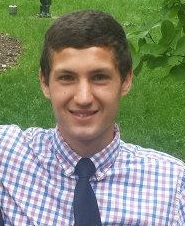 Clark Shurtleff - I am a rising senior at the University of Pennsylvania in Philadelphia. I’m originally from Bethany, Connecticut. I am majoring in Materials Science within the engineering school at Penn. Outside of the classroom, I am a varsity athlete on Penn’s cross country, indoor track, and outdoor track teams. I am also a student-athlete tutor and spent the last semester working as a teaching assistant for a Materials Science lab course. In my free time, I like to watch movies with my teammates and serve as “house mom” in our apartment. My other interests include reading science fiction and I am a big fan of Lord of the Rings.
Clark Shurtleff - I am a rising senior at the University of Pennsylvania in Philadelphia. I’m originally from Bethany, Connecticut. I am majoring in Materials Science within the engineering school at Penn. Outside of the classroom, I am a varsity athlete on Penn’s cross country, indoor track, and outdoor track teams. I am also a student-athlete tutor and spent the last semester working as a teaching assistant for a Materials Science lab course. In my free time, I like to watch movies with my teammates and serve as “house mom” in our apartment. My other interests include reading science fiction and I am a big fan of Lord of the Rings.
Project Mentors: Alessandro Cattaneo and Heidi Hahn
Project Team: Leah Dickstein, Kevin Keller, Ethan Robinson
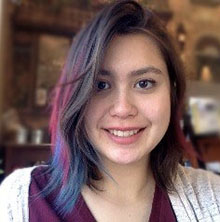 Leah Dickstein - Leah Dickstein is going to be a third-year student at UC Berkeley studying Electrical Engineering and Computer Science. She is currently researching delay in control systems with Professor Anant Sahai and Dr. Gireeja Ranade. At Berkeley, she's involved with Hackers@Berkeley (a computer science club) and she teaches a class on knitting! She likes listening to Liquid Dubstep/Chillstep/House music and KPop. She also enjoys baking, hiking/exploring nature, and reading fantasy/sci-fi/classics.
Leah Dickstein - Leah Dickstein is going to be a third-year student at UC Berkeley studying Electrical Engineering and Computer Science. She is currently researching delay in control systems with Professor Anant Sahai and Dr. Gireeja Ranade. At Berkeley, she's involved with Hackers@Berkeley (a computer science club) and she teaches a class on knitting! She likes listening to Liquid Dubstep/Chillstep/House music and KPop. She also enjoys baking, hiking/exploring nature, and reading fantasy/sci-fi/classics.
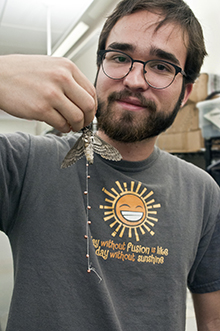 Kevin Keller - I am studying Electrical Engineering at NC State University in Raleigh. While at State I interned at ABB Switzerland in Zurich and studied abroad at the Technical University of Berlin. I am graduating in December and am planning on going to graduate school next fall. I am interested in bioelectricity, robotics, and control systems. I enjoy rock climbing, backpacking, camping, and dancing.
Kevin Keller - I am studying Electrical Engineering at NC State University in Raleigh. While at State I interned at ABB Switzerland in Zurich and studied abroad at the Technical University of Berlin. I am graduating in December and am planning on going to graduate school next fall. I am interested in bioelectricity, robotics, and control systems. I enjoy rock climbing, backpacking, camping, and dancing.
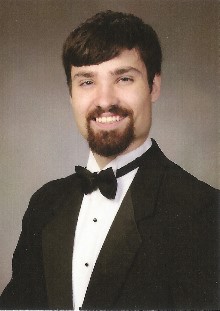 Ethan Robinson - Ethan Robinson graduated from Virginia Tech with his Bachelors of Science in Mechanical Engineering in the spring and is returning in the fall to complete his Masters of Science in Mechanical Engineering. He has pursued his interest in Cyber-Physical Systems through his undergraduate degree, including robotics and mechatronics coursework, as well as working with Lockheed Martin’s Advanced Technology Labs for his senior design project developing a robotic base for the Baxter Research Robot. In the fall, he will continue this interest in graduate school, where he plans to study autonomous vehicles. Specifically, he plans to work with Dr. Kochersberger of the Unmanned Systems Lab on developing an autonomous aerial vehicle to monitor the Amazon rainforest for illegal clear-cutting. When not pursuing his academic interests, Ethan spends his free time enjoying the outdoors through mountain biking, rock climbing, and backpacking.
Ethan Robinson - Ethan Robinson graduated from Virginia Tech with his Bachelors of Science in Mechanical Engineering in the spring and is returning in the fall to complete his Masters of Science in Mechanical Engineering. He has pursued his interest in Cyber-Physical Systems through his undergraduate degree, including robotics and mechatronics coursework, as well as working with Lockheed Martin’s Advanced Technology Labs for his senior design project developing a robotic base for the Baxter Research Robot. In the fall, he will continue this interest in graduate school, where he plans to study autonomous vehicles. Specifically, he plans to work with Dr. Kochersberger of the Unmanned Systems Lab on developing an autonomous aerial vehicle to monitor the Amazon rainforest for illegal clear-cutting. When not pursuing his academic interests, Ethan spends his free time enjoying the outdoors through mountain biking, rock climbing, and backpacking.
Experimental modal analysis has been a common experimental dynamics tool for structural engineers for more than three decades. This technique allows us to measure the natural frequencies and mode shapes of a structure. This information can be used to predict structural response to loads, and has also been applied to fields such as structural health monitoring. Typically performing an experimental modal analysis involves instrumenting a structure with accelerometers, exciting the structure with a modal hammer or electro-magnetic shakers, collecting the resulting data with a data acquisition system, and then going through a curve-fitting routine. This technique has had great success, but it can be time consuming and costly to complete a test. Recently techniques have been developed to magnify small movements in video. Initial experiments at MIT and Los Alamos National Laboratory suggest these video magnification techniques may be suitable for replacing the accelerometers used for experimental modal analysis with video cameras. The goal of this work is to see if spatio-temporal patterns indicative of mode shapes can be quantitatively extracted from video. If this work is successful it will help enable remote, non-contact, visual modal testing that is much less expensive and could possibly be applied all the way from the city-scale down to the scale of a single cell in the human body.
Project Mentors: Garrett Kenyon, Yongchao Yang, David Mascarenas
Project Team: Charlie Dorn, Tyler Mancini, Zack Talken
 Charlie Dorn - Charlie Dorn is entering his senior year at the University of Wisconsin – Madison. He will graduate with a B.S. is Engineering Mechanics and Astronautics and a certificate in physics. He spent last summer at the NASA Glenn Research Center conducting tribology research in support of the International Space Station. In the spring of 2015, he spent the semester studying at Nanyang Technological University in Singapore. His hobbies include running, hiking, ultimate frisbee, and traveling.
Charlie Dorn - Charlie Dorn is entering his senior year at the University of Wisconsin – Madison. He will graduate with a B.S. is Engineering Mechanics and Astronautics and a certificate in physics. He spent last summer at the NASA Glenn Research Center conducting tribology research in support of the International Space Station. In the spring of 2015, he spent the semester studying at Nanyang Technological University in Singapore. His hobbies include running, hiking, ultimate frisbee, and traveling.
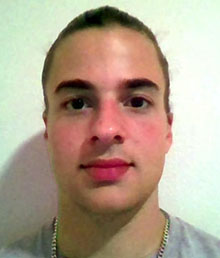 Tyler Mancini - I'm Tyler Mancini and I was born in Rochester, NY about 22.5 years ago. I just recently graduated from the University at Buffalo (in Buffalo, NY) in May where I studied Aerospace and Mechanical Engineering for four years. While there, I participated in the University Nanosatellite Program which is a competition sponsored by the Air Force Research Lab to design and build a nanosatellite from the ground up. I worked briefly with the Attitude Determination and Control subsystem before switching over to the Thermal group where I eventually became the subsystem lead. I ended up leaving the project to pursue other ventures, but still enjoyed my time with the team. I also interned at Praxair, the largest industrial gases company in North and South America and the third largest worldwide. While there, I worked with the mechanical equipment group and specifically worked on redesigning the condensate management system for heat exchangers used with the gas compressors.
Tyler Mancini - I'm Tyler Mancini and I was born in Rochester, NY about 22.5 years ago. I just recently graduated from the University at Buffalo (in Buffalo, NY) in May where I studied Aerospace and Mechanical Engineering for four years. While there, I participated in the University Nanosatellite Program which is a competition sponsored by the Air Force Research Lab to design and build a nanosatellite from the ground up. I worked briefly with the Attitude Determination and Control subsystem before switching over to the Thermal group where I eventually became the subsystem lead. I ended up leaving the project to pursue other ventures, but still enjoyed my time with the team. I also interned at Praxair, the largest industrial gases company in North and South America and the third largest worldwide. While there, I worked with the mechanical equipment group and specifically worked on redesigning the condensate management system for heat exchangers used with the gas compressors.
Moving forward, I am attending UT Austin in the fall for graduate school where I plan to pursue an MS in Aerospace Engineering and possibly a PhD pending the availability of funding. I'm very interested in both the human body as well as space so I'd like to try to bring those together with my studies and am considering exploring the "bioastronautics" field. However, I'm a bit apprehensive due how narrow the applications of the field are. I'm very excited to work at the lab this summer and am looking forward to exploring Los Alamos as well as the surrounding areas. I'm an avid outdoorsman and I enjoy almost all types of physical activity. I like to hike, rock climb, and camp amongst other things. As I mentioned, I'm interested in the human body and with that I've become very seriously involved with fitness and nutrition over the past few years. I enjoy working out and it always feels a little weird if I don't make it to the gym. Along with this, I've also taken up the study of anatomy a nd physiology as a bit of a hobby. Finally, I love to cook and prepare my own meals because it allows me to be creative while also incorporating my interest in nutrition science into my daily life. I hope to make the most of this opportunity here at LADSS and I can't wait to meet everyone.
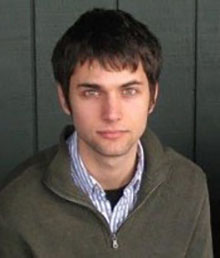 Zack Talken - Zack Talken is a mechanical engineer. Aside from building four trebuchets, ranging from one foot high to twelve feet high, he has designed and built other various projects. He loves the outdoors and has spent over 250 days camping throughout his life. This primarily contributed to his choice of favorite color being 550 nm.
Zack Talken - Zack Talken is a mechanical engineer. Aside from building four trebuchets, ranging from one foot high to twelve feet high, he has designed and built other various projects. He loves the outdoors and has spent over 250 days camping throughout his life. This primarily contributed to his choice of favorite color being 550 nm.
Additive manufacturing is taking over. Nevertheless, the greatest question still remains: “can I trust this 3D printed part?” Additive manufacturing (AM) introduces a new set of variables that affect manufacturing quality that simply are not part of traditional manufacturing processes. For example, in most traditional manufacturing processes, it is easy to qualify the solid base material from which a part is cut. In additive manufacturing, the base material is being built up, so for each part, one must qualify both the geometry of the part, as well its material construction.
The peculiarities and additional requirements for quality control of AM parts push the limits of existing non-destructive inspection techniques. AM usually involves small production quantities and each print run of the part is unique, so statistical sampling and destructive testing are not practical. Existing ultrasonic testing techniques, which are effective on relatively simple parts cut from a single block of material, are confounded by the internal intricacies that are possible with AM.
In this project, you will develop a new in situ ultrasonic inspection technique for additive manufacturing. You will design a system to actively probe the part with ultrasound throughout the entire build process. Resonant ultrasound spectroscopy (RUS) is one technique worth exploring. Acoustic resonance spectroscopy (ARS) and resonance inspection (RI) are similar techniques.
Project Mentors: Eric Flynn and Adam Wachtor
Project Team: Ian Cummings, Elizabeth Hillstrom, Rielly Newton
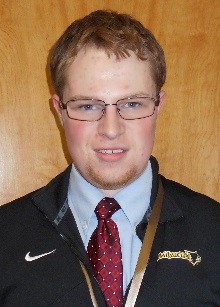 Ian Cummings - Hello All! My name is Ian Cummings, and I am a student at Michigan Technological University. I am currently pursuing my Bachelor’s Degree in Computer Engineering, and I intend to earn my Master’s Degree (also in Computer Engineering). With that education, my goal is to work in the defense/aerospace field with autonomous robotics. Stepping back a bit, I was born and raised in Traverse City, MI. I spent a great deal of time as a Boy Scout, earning the rank of Eagle Scout during my senior year of high school. I was also a proud member of FIRST Robotics Team 1711: The RAPTORS and I continue to mentor that team in my spare time. For fun, I enjoy spending time outdoors. I intend to squeeze in some hiking and mountain biking in the area while I’m not at work. I have never been “out west” before, so I plan on exploring and seeing the sights.
Ian Cummings - Hello All! My name is Ian Cummings, and I am a student at Michigan Technological University. I am currently pursuing my Bachelor’s Degree in Computer Engineering, and I intend to earn my Master’s Degree (also in Computer Engineering). With that education, my goal is to work in the defense/aerospace field with autonomous robotics. Stepping back a bit, I was born and raised in Traverse City, MI. I spent a great deal of time as a Boy Scout, earning the rank of Eagle Scout during my senior year of high school. I was also a proud member of FIRST Robotics Team 1711: The RAPTORS and I continue to mentor that team in my spare time. For fun, I enjoy spending time outdoors. I intend to squeeze in some hiking and mountain biking in the area while I’m not at work. I have never been “out west” before, so I plan on exploring and seeing the sights.
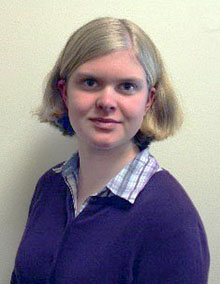 Elizabeth Hillstrom - Elizabeth is an undergraduate in Mechanical Engineering at Stanford University. She enjoys building robots, mostly focusing on autonomous vehicles, and is currently working on an optical communications satellite project with the Student Space Initiative. She is also an avid bicyclist, outdoorsperson, and dancer.
Elizabeth Hillstrom - Elizabeth is an undergraduate in Mechanical Engineering at Stanford University. She enjoys building robots, mostly focusing on autonomous vehicles, and is currently working on an optical communications satellite project with the Student Space Initiative. She is also an avid bicyclist, outdoorsperson, and dancer.
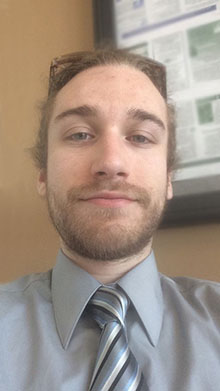 Rielly Newton - I am a senior and Tennessee Tech University, studying Mechanical Engineering. I am an active member of Pi Tau Sigma, and Tau Beta Pi. I plan on pursuing my MS in Mechanical Engineering with an emphasis in vibrations. My academic interests include: vibrations, alternative fuels, renewable energy, and robotics. Outside of school I enjoy mountain biking, kayaking, and hiking.
Rielly Newton - I am a senior and Tennessee Tech University, studying Mechanical Engineering. I am an active member of Pi Tau Sigma, and Tau Beta Pi. I plan on pursuing my MS in Mechanical Engineering with an emphasis in vibrations. My academic interests include: vibrations, alternative fuels, renewable energy, and robotics. Outside of school I enjoy mountain biking, kayaking, and hiking.
Accelerating particles to billions of electron volts requires enormous electric fields, gradients of tens of millions of volts/meter. The only way to create such large fields without also immediately creating a destructive breakdown/discharge is to use fields that oscillate from millions to billions of times per second, thus never allowing the electrons in the conductor to accumulate long enough to cause a discharge. The most efficient way to create extremely high frequency oscillating electric fields is to use resonant cavities. Just like any mechanical system has many natural resonant frequencies of vibration, these structures can also support electromagnetic resonant fields, with frequencies inversely proportional to the inner radius of the structure, for a cylindrical cavity roughly f ~ 2.405c/r, where c is the speed of light and r is the inner radius. The resonant cavities used in particle accelerators operate in the radio frequency (RF) range: hundreds of megahertz to several gigahertz, and are extremely sensitive to mechanical deformation, which drastically changes the properties of the electric field, by directly influencing the resonant frequency. To successfully accelerate and bunch particles according to designed energies, the RF fields of accelerating structures must have precise amplitudes and must be precisely timed relative to a designed reference signal.
With careful machining and tuning a cavity can be created with dimensions such that it supports almost exactly a desired resonant frequency. Precise field control can also be utilized to time the signal so that it matches a desired reference signal’s phase and to maintain desired field amplitude. However, especially in superconducting structures, an interesting problem coupling the mechanical and electromagnetic properties of the resonant cavities causes the cavities themselves to distort and move their own resonance. As the field of a resonant cavity is brought on and reaches steady state (hundreds of microseconds), on the time scale of the mechanical system it looks like a step change in which an enormous field has suddenly been switched on, which kicks, pulls and pushes the cavity walls with an electromagnetic phenomenon known as Lorentz force detuning. This sudden kick of the cavity causes it to physically resonate at its mechanically modes, distorting the cavity geometry and moving the electromagnetic resonance. If this is uncompensated, from the RF point of view, even a tiny mechanical change (micrometers), corresponding to a ~200Hz, or 0.000015% resonance change in the case of a 1.3GHz cavity, is an unacceptable drift from the design value, causing the input RF power to reflect, the magnitude of the electromagnetic wave to drop and for a sudden and large phase drift of the cavity’s field relative to a desired reference signal, a change so large and fast that the RF feedback system cannot compensate to maintain the cavity field within design constraints. Typically, to deal with this problem, piezo electric elements are used in order to compensate for and cancel out the Lorentz force caused by mechanical cavity oscillations by an iterative learning approach.
Project Mentors: Alex Scheinker and Alex Marchi
Project Team: Brian Page, Patricia Tan, Murray Orlando
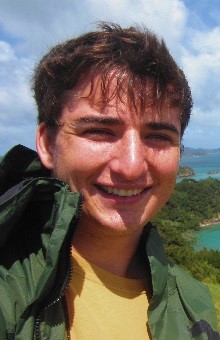 Brian Page - Brian Page is a Mechanical Engineering student currently studying at Michigan Technological University in Houghton, MI. He will receive his Bachelor of Science degree prior to the start of the Los Alamos Dynamics Summer School and will be continuing onto graduate school for a PhD in Mechanical Engineering. Brian’s background is with robotics and controls and he has worked with the Nonlinear and Autonomous Systems Lab at Michigan Tech on development of underwater gliders. Brian’s senior research thesis is focused around the development of turning control for underwater gliders. He enjoys mountain and road cycling, backpacking, skiing, snowshoeing, and is a certified scuba diver and lifeguard. Brian currently resides in the snowiest place east of the Rockies, Houghton, Michigan.
Brian Page - Brian Page is a Mechanical Engineering student currently studying at Michigan Technological University in Houghton, MI. He will receive his Bachelor of Science degree prior to the start of the Los Alamos Dynamics Summer School and will be continuing onto graduate school for a PhD in Mechanical Engineering. Brian’s background is with robotics and controls and he has worked with the Nonlinear and Autonomous Systems Lab at Michigan Tech on development of underwater gliders. Brian’s senior research thesis is focused around the development of turning control for underwater gliders. He enjoys mountain and road cycling, backpacking, skiing, snowshoeing, and is a certified scuba diver and lifeguard. Brian currently resides in the snowiest place east of the Rockies, Houghton, Michigan.
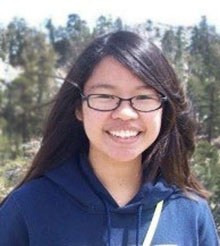 Patricia Tan - Patricia Tan is an undergraduate at University of California in San Diego, pursuing a degree in Structural Engineering with a Civil and Geotechnical focus. She is currently involved with Tau Beta Pi and Society of Civil and Structural Engineers. After receiving her degree from UC San Diego, she plans to go to graduate school to study Civil Engineering. Patricia has also participated in National Novel Writing Month and enjoys writing as a hobby.
Patricia Tan - Patricia Tan is an undergraduate at University of California in San Diego, pursuing a degree in Structural Engineering with a Civil and Geotechnical focus. She is currently involved with Tau Beta Pi and Society of Civil and Structural Engineers. After receiving her degree from UC San Diego, she plans to go to graduate school to study Civil Engineering. Patricia has also participated in National Novel Writing Month and enjoys writing as a hobby.
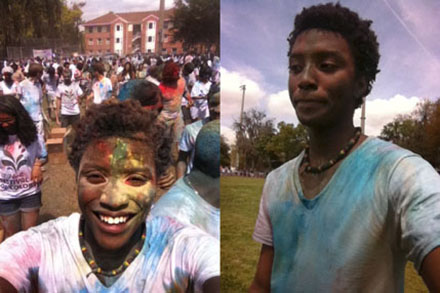 Orlando Murray - My name is Orlando Murray, I’m a junior at the University of Florida. I’ve lived in Florida since I’ve been in grade school, and mostly right next to a lake/swampland (Seen too many alligators to count). I don’t really do much in my free time. I sometimes go to house parties on the weekend but during the days I might just walk round aimlessly to kill time. I’m studying Electrical Engineering UF and also minoring in Communication Studies, because I find it cool how information moves from one entity to another. Specifically, how digital computers can transfer data to one another, how electronics can observe real world phenomena and translate it into signals, how people can tell a binary machine what to do (programming) and also how people communicate ideas to other people. So if you catch me staring at you while you’re in a conversation, I’m not judging, I’m just observing.
Orlando Murray - My name is Orlando Murray, I’m a junior at the University of Florida. I’ve lived in Florida since I’ve been in grade school, and mostly right next to a lake/swampland (Seen too many alligators to count). I don’t really do much in my free time. I sometimes go to house parties on the weekend but during the days I might just walk round aimlessly to kill time. I’m studying Electrical Engineering UF and also minoring in Communication Studies, because I find it cool how information moves from one entity to another. Specifically, how digital computers can transfer data to one another, how electronics can observe real world phenomena and translate it into signals, how people can tell a binary machine what to do (programming) and also how people communicate ideas to other people. So if you catch me staring at you while you’re in a conversation, I’m not judging, I’m just observing.
In the discipline of Structural Health Monitoring (SHM), the condition of a structure is often assessed using a combination of measurements and numerical models that attempt to infer the structural state from changes in the vibration signature. A time series model, for example from the family of Auto Regressive and Moving Average (ARMA) models [1], is trained using the measured vibration responses of the pristine structural condition. The hypothesis is that the occurrence of damage manifests itself as a significant difference between what is measured on the (now damaged) structure and what the trained model predicts. This paradigm is one in pattern recognition for which methods have successfully been applied to real structures [2].
One challenge is the management of vibration response uncertainty. Vibrations of the structure change because external forces (wind loads for an aircraft, ground vibrations for a building, traffic on a bridge, etc.) vary, not just because the structure becomes damaged. Statistical methods, such as process control charts, have been developed to address the difficulty of environmental variability. Another difficulty is the modeling uncertainty. Several competing models of the vibration response can be available, which all fit the past observations equally well. Likewise, the parameters of a given model might need to tolerate some uncertainty in order to better capture the aforementioned environmental variability. Setting the values of model parameters too strictly leads to the risk that a difference between what the time series model predicts and what is measured on the structure is (erroneously) attributed to structural damage.
This project proposes to treat the challenges posed by the variability in the environment, unknown model forms and/or unknown model parameters as a problem in decision-making for which gaps in our knowledge, which are the previously listed sources of uncertainty, need to be managed robustly and adaptively to avoid false-positives or false-negatives of the structural condition. The proposal is to integrate three relatively well-known technologies and assess whether this novel algorithm performs better than more “conventional” approaches. Validation would involve performing vibration tests on a laboratory structure to collect data representative of the pristine and damaged states of the structure, and assess how the algorithm performs.
The first technology needed is a time series algorithm to model the vibration response. There is no need to develop our own technique; we can, instead, simply adopt a method suggested by experts in the field [2]. This algorithm will forecast the vibration signature, compare predictions to actual measurements, and synthesize these responses in a to-be-defined damage indicator.
The second technology is a description of uncertainty present in the problem, which will likely come as environmental variability, unknown model forms, and/or unknown model parameters. For simplicity, the description of uncertainty can be restricted to intervals defined around the nominal values. Probability laws, if available, can also be used. An analysis of robustness is then performed to propagate this uncertainty through the time series algorithm and obtain the resulting bounds of uncertainty of the damage indicator. Both uncertainty description and robustness will be implemented within the framework of info-gap analysis [3]. Info-gap software, which essentially consists of solving numerical optimization problems, will be made available in MATLAB® for integration with the time series algorithm.
In the info-gap theory of decision-making, the “size” of the uncertainty space is defined by a parameter labeled α. A larger value of α means, by definition, that more uncertainty can be tolerated while guaranteeing that the damage indicator remains below a critical level that would signify the occurrence of damage. The larger the value of α, therefore, the better because the decision reached in the analysis, such as “no damage”, is more immune to uncertainty present in the environment and model form. The third component, which is more research-oriented than the other two, is to actively learn what an appropriate value of α ought to be.
Using the value of α derived from previous times to analyze the vibration response at a future time is not necessarily a good strategy. A value of α that has worked in the past might not be appropriate to represent the size of the uncertainty space if the time series model no longer characterizes the current state of the structure. This might lead to unwanted “surprises.” We suggest to track and adapt α in time using a technique recently proposed to learn the values of model parameters [4]. The algorithm will need to be programmed to learn, not the parameters of the time series model, but the value of α as a function of time. Our hypothesis is that examining how α changes in time might lead to superior diagnostics of structural damage as compared to only monitoring the damage indicator.
The project will require some programming, not so much to develop the individual algorithms, which we are hoping to obtain from their original authors, but to interface them together. It will also require vibration testing of a to-be-defined laboratory structure to collect time-history data that characterize several conditions, from pristine to damaged structural states. Because the condition monitoring method proposed should be immune to environmental variability as much as possible, vibration tests will be executed at different levels of background “noise” and/or applied excitation. Results will be documented in a technical manuscript to be presented at the 34th International Modal Analysis Conference in February 2016.
Project Mentors: Kendra Van Buren and François Hemez
Project Team: Harry Edwards, Kyle Neal, Jack Reilly
 Harry Edwards - My name is Harry Edwards and I’m a 23-year-old Mechanical Engineer working at AWE UK. I started working at AWE in January 2014 on a two-year graduate scheme where I have worked in a number of different departments around the company but focusing on Engineering Analysis. At university I studied Aerospace Engineering and graduated with a first class honors degree. I currently live just outside London and am very much looking forward to working
Harry Edwards - My name is Harry Edwards and I’m a 23-year-old Mechanical Engineer working at AWE UK. I started working at AWE in January 2014 on a two-year graduate scheme where I have worked in a number of different departments around the company but focusing on Engineering Analysis. At university I studied Aerospace Engineering and graduated with a first class honors degree. I currently live just outside London and am very much looking forward to working
Outside of work, I enjoy a variety of sports and activates including, Golf, Squash, Snowboarding, Football (the English kind) and Hiking. This summer I am keen to explore the local area and beyond and I intend on taking time off work after the summer school to see some sights in North America.
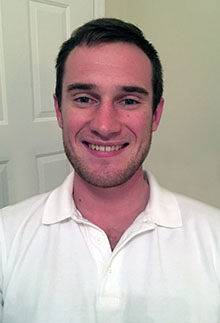 Kyle Neal - I recently completed my undergraduate studies at Lipscomb University with a degree in Civil & Environmental Engineering. In the fall, I will begin the PhD program at Vanderbilt University where I will specialize in risk and reliability as it applies to structural health monitoring. I previously worked two and a half years as a student intern at Barge Waggoner Sumner & Cannon, and spent last summer as an undergraduate research assistant at Vanderbilt University. I was born and raised in rural middle Tennessee. In my spare time I enjoy basketball, volleyball, weight lifting, and working on the family farm.
Kyle Neal - I recently completed my undergraduate studies at Lipscomb University with a degree in Civil & Environmental Engineering. In the fall, I will begin the PhD program at Vanderbilt University where I will specialize in risk and reliability as it applies to structural health monitoring. I previously worked two and a half years as a student intern at Barge Waggoner Sumner & Cannon, and spent last summer as an undergraduate research assistant at Vanderbilt University. I was born and raised in rural middle Tennessee. In my spare time I enjoy basketball, volleyball, weight lifting, and working on the family farm.
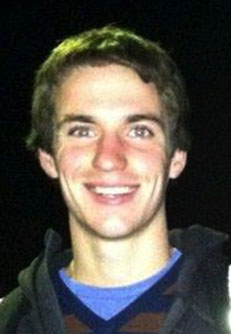 Jack Reilly - My name is Jack Reilly, I’m a first year graduate student at Princeton University. I’m from Philadelphia Pennsylvania, and I enjoy outdoor activities, books, movies, and sports. I’m looking forward to spending a summer in New Mexico Learning at the Los Alamos Dynamic Summer School.
Jack Reilly - My name is Jack Reilly, I’m a first year graduate student at Princeton University. I’m from Philadelphia Pennsylvania, and I enjoy outdoor activities, books, movies, and sports. I’m looking forward to spending a summer in New Mexico Learning at the Los Alamos Dynamic Summer School.
Speaker Presentations
Speaker: Dustin Harvey, LANL
Increasingly, researchers, engineers, and analysts find themselves inundated with numeric sequence data for use in classification tasks. Ever-decreasing costs of sensing, data acquisition, and data storage hardware have led to many applications where sequential data is abundantly available, but domain knowledge is very limited. Domain knowledge primarily drives the selection and design of pre-processing steps, features, models, and learning algorithms that constitute a pattern recognition system. These decisions are critical to the ultimate performance of the system, but few general guidelines or frameworks exist to guide the inexperienced practitioner. In this work, a genetic programming based approach called Autofead is proposed and demonstrated to automate feature design for numeric sequence pattern recognition systems. Autofead represents the first such system to leverage the power and efficiency of both numerical optimization and standard pattern recognition algorithms. Potential applications include the monitoring of electrocardiogram signals for indications of heart failure, network traffic analysis for intrusion detection systems, vibration measurement for bearing condition determination in rotating machinery, and credit card activity for fraud detection.
Speaker: Garrett Kenyon, LANL
Sparse predictive coding modules have emerged as viable candidates for defining a universal cortical processor. Sparse autoencoders are self-organizing and can explain many of the linear and nonlinear response properties of simple cells in the primary visual cortex. Moreover, sparse predictive coding modules can be strung together into essentially arbitrary topologies. Here, we demonstrate how sparse predictive coding modules can be used to represent form, motion and depth features in a manner that enables subsequent analysis. We use an open source, high-performance neural simulation toolbox called PetaVision. In a typical simulation, we use either single images, sequences of video frames, or stereo image pairs, which are loaded into the input layer. A layer of cortical neurons then learns an optimal set of features for representing that input as accurately as possible while using as few active elements as possible, a process than can be simulated using lateral synaptic inhibition. The same process is then repeated to learn the receptive field properties of subsequent layers arranged in a hierarchical sequence. We then test the resulting sparse representations 3 ways. First, we test for the ability of a multi-layer sparse hierarchy to support good classification performance on object detection tasks, thereby assessing how the sparse representation represents form in a partially viewpoint invariant manner. Second, we test for the ability of a multi-layer hierarchy trained on short video sequences to enable good discrimination between different types of human actions, thereby assessing the how our sparse representation of motion enable better discrimination of spatiotemporal patterns. Third, we test for the ability of a sparse representations trained on stereo image pairs to reconstruct accurate depth maps. Our results illustrate how sparse predictive coding can be applied to a range of visual processing modalities and thus support the hypothesis that sparse coding can be used to define a universal cortical processing module that can be configured into arbitrary topologies for solving different information processing tasks.
Speaker: Heidi Hahn, LANL
Design Thinking is a relatively recent approach to engineering for product design. Originally conceived by the commercial company IDEO, it has since become a major part of the curriculum at the Stanford University design school, which has further developed tools and techniques for implementation. This talk will provide an overview of the Design Thinking process. An example implementation – a project executed by Systems Engineering Masters students at the Naval Postgraduate School for LANL – will be used to illustrate how Design Thinking works in practice. Lessons learned about the practical application of Design Thinking will also be shared.
Speaker: Pete Avitabile, UCSD
Dynamic response due to operating and accessional loads is an important consideration in the design of structural systems. Fatigue and life usage are of great importance for structural health monitoring. However, in the design of many structural systems, the actual loading and structural condition (boundary condition, environmental condition, etc.) are not readily known or easily determined. These are critical pieces of information necessary for the design of any structural system.
Much effort has been expended by many researchers in attempting to identify these loading scenarios. At best, the forces and actual boundary conditions are approximate and have an effect on the overall predicted response and resulting stress-strain that is identified for subsequent evaluation. In addition, the operating system is generally only measured with a very sparse array of transducers to identify the actual loading conditions.
Recently several new approaches have been developed that allow for limited sets of measured data, in conjunction with a finite element model, to be used for prediction of full-field response. The limited sets of measurements are used with a unique expansion algorithm to obtain this full field information. The finite element model mass and stiffness matrices are used to obtain the normal constitutive relations as well as the modal characteristics. This information is used to develop the expansion algorithm and for the stress recovery during the back substitution process typically employed. A basic discussion of the process used is presented along with some results from a wind turbine system.
Speaker: Sanjoy Dasgupta, UCSD
The "active learning" model is motivated by scenarios in which it is easy to amass vast quantities of unlabeled data (images and videos off the web, speech signals from microphone recordings, and so on) but costly to obtain their labels. Like supervised learning, the goal is ultimately to learn a classifier. But the labels of training points are hidden, and each of them can be revealed only at a cost. The idea is to query just a few labels that are especially informative about the decision boundary, and thereby to obtain an accurate classifier at significantly lower cost than regular supervised learning.
There are two distinct ways of conceptualizing active learning, which lead to rather different querying strategies. The first treats active learning as an efficient search through a hypothesis space of candidates, while the second has to do with exploiting cluster or neighborhood structure in data. In this talk, I will show how each view leads to active learning algorithms that can be made efficient and practical, and have provable label complexity bounds that are in some cases exponentially lower than for supervised learning.
I will also give a brief overview of the other primary research interests of my group: hierarchical clustering, fast nearest neighbor search, and adaptation to the intrinsic dimension of data.



